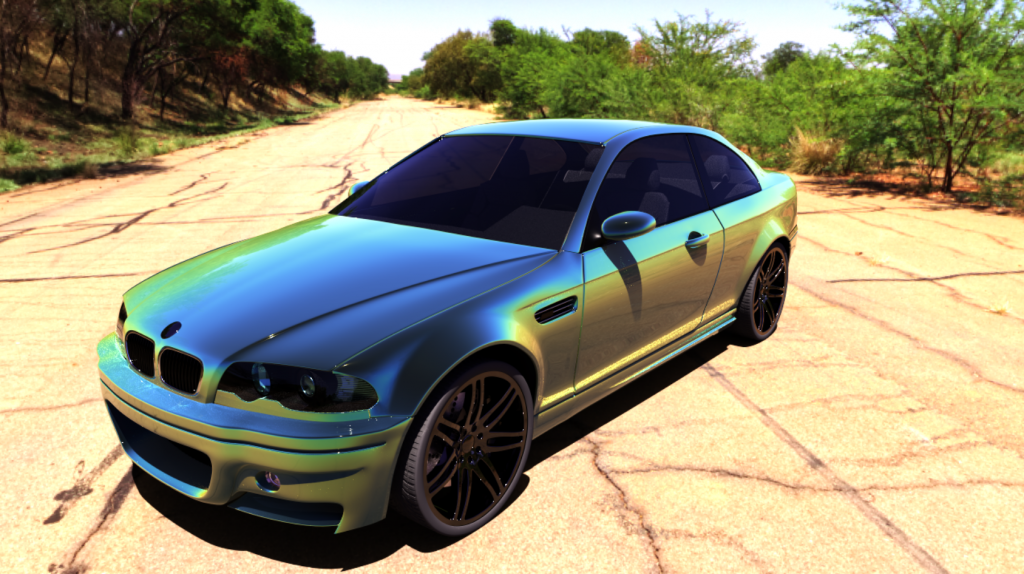To generate photo-realistic images, one needs to simulate the light transport inside a chosen virtual scene observed from a virtual viewpoint (i.e., a virtual camera). A virtual scene is obtained by modelling (or measuring from the real-world) the:
– shapes of the objects and the light sources,
– the materials reflectance and transmittance
– the spectral emittance of the light sources.
Simulating the light transport is done by solving the recursive Rendering Equation. This equation states that the equilibrium radiance (in Wm-2sr-1 per wavelength) leaving a point is the sum of emitted and reflected radiance under a geometric optics approximation.
The Rendering Equation is therefore directly related to the law of conservation of energy.The rendering equation is solved with Monte-Carlo computations In the context of Computer Graphics, a Monte-Carlo sample is a geometric ray carrying radiance along its path, which is stochastically (e.g., using Russian roulette) constructed.
PlaFRIM permits researchers in Computer Graphics to simulate billion of light paths/rays to generate reference images for a given virtual scene.
These data can be used to validate:
– new models that predicts how light is scattered by a material
– new rendering algorithm that are more efficient in terms of variance but also in terms of parallelism.
Indeed, PlaFRIM offers a large palette of computing nodes (CPU, bi-GPU) that permit us to develop, test and validate the whole rendering pipeline.

Contact: Romain Pacanowski romain.pacanowski AT inria.fr